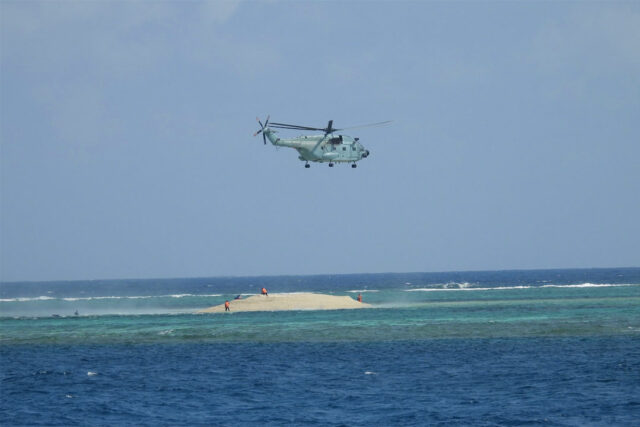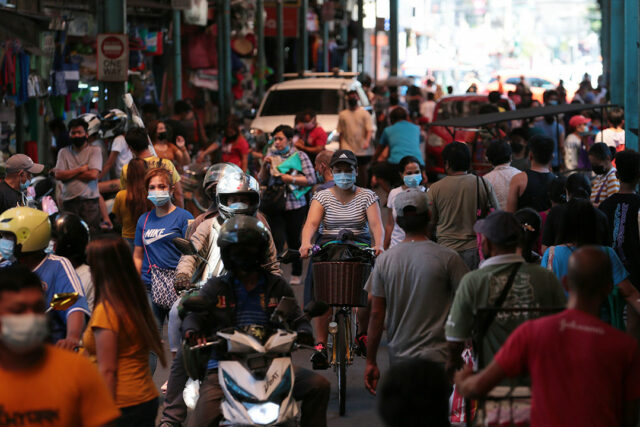Residential property price growth further slows in Q4 – BSP data
By Luisa Maria Jacinta C. Jocson, Reporter
Housing prices nationwide rose at a much slower pace in the fourth quarter of 2023, data from the Bangko Sentral ng Pilipinas (BSP) showed.
The Residential Real Estate Price Index (RREPI) rose by 6.5% year on year in the October-to-December period. This was much slower than the 12.9% expansion in the third quarter and the 7.7% growth in the same period a year earlier.
This was also the slowest growth in residential property prices since the 2.6% in the second quarter of 2022.
 On a quarterly basis, nationwide home prices contracted by 3.6%, ending two quarters of growth.
On a quarterly basis, nationwide home prices contracted by 3.6%, ending two quarters of growth.
Joey Roi H. Bondoc, associate director for research at Colliers International Philippines, said the quarter-on-quarter contraction in prices may have been due to a slower take-up in the fourth quarter.
“This is probably due to some end-users and investors, especially those that depend on Overseas Filipino Worker (OFW) remittances, having to factor in other expenses due to the holiday season and other big-ticket purchases including cars,” he said in an email.
The RREPI tracks the average price changes of residential properties across different housing types and locations. This provides the central bank with insights into the property market, which is regulated due to bank exposure.
BSP data also showed that the prices of single-detached/attached houses rose by an annual 9.5% in the fourth quarter, slower than the 16.8% expansion in the previous quarter and the 10% growth a year ago.
Prices of townhouses grew by 4.9% in the October to December period, easing from 9.3% in the third quarter but a turnaround from 6.8% decline in the same period in 2022.
Prices of condominium units went up by 4.1% in the fourth quarter, slower than the 8.3% and 12.9% posted in the third quarter of 2023 and fourth quarter of 2022, respectively.
On the other hand, prices of duplex units dropped by 33.5%, a reversal of the 57.7% growth in the July-September period and 42.9% expansion in fourth quarter of 2022.
OUTSIDE NCR
Meanwhile, residential property prices in the National Capital Region (NCR) increased by 4.3% in the fourth quarter, slower than the 12.3% in the previous quarter and 16.1% a year ago.
In contrast, residential property prices in areas outside NCR (AONCR) jumped by 7.8%. This was a faster clip than the 4.5% in the same period a year earlier but slower than the 14.3% in the third quarter.
In the fourth quarter, residential and real estate loans granted for all types of new housing units spiked by 30.5% year on year, despite elevated interest rates.
Housing loans in NCR and AONCR increased by 38.5% and 26.6%, respectively.
By type, most of the loans were used to purchase single-detached/attached houses and condominium units (both at 42.6%), followed by townhouses (14.7%.)
“Much of the loans are still cornered by NCR, Central Luzon, Calabarzon, Western Visayas, Central Visayas, and Davao region. This is expected given that developers have also been aggressively launching massive horizontal and vertical projects in these regions,” Mr. Bondoc said.
“We expect these regions to dominate in terms of real estate loans, especially once developers launch the residential projects that they have lined up within their master-planned communities,” he added.
BSP data also showed the average appraised value of new housing units in the Philippines stood at P89,042 per square meter (sq.m.) in the last three months of 2023.
The average appraised value in NCR was P134,178 per sq.m., while the average appraised value in AONCR stood at P65,186 per sq.m.
For the rest of the year, Mr. Bondoc expects a continued increase in property prices.
“We see the rise in residential prices being driven by horizontal projects including house-and-lot and lot-only developments. Single detached and attached units, for instance, remain popular among OFW investors and households that receive remittances from Filipinos working abroad,” he said.
However, he does not see a substantial increase in condominium prices amid the “tepid pre-selling market,” particularly in Metro Manila.
“Developers have taken a more cautious stance in terms of their pre-selling condominium launches in Metro Manila and this is likely to result in slower turnover of condominium units in the next three to five years,” he said.
“Developers have been offsetting the lukewarm demand in Metro Manila by launching massive and expansive projects outside of the capital region,” he added.












